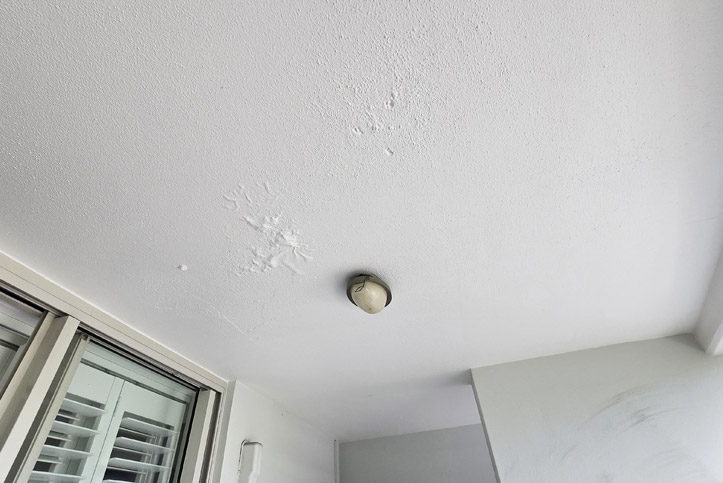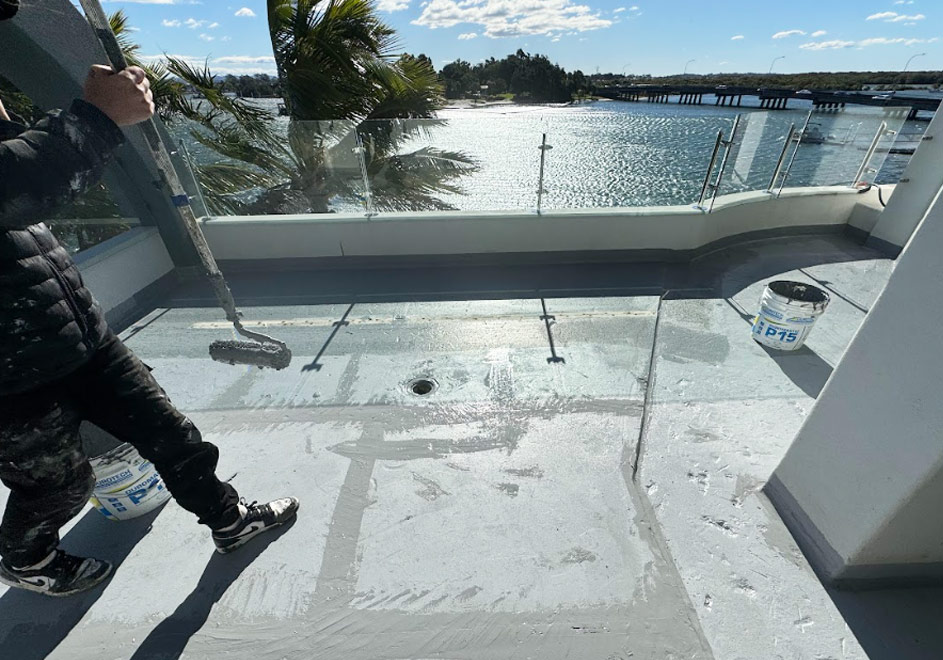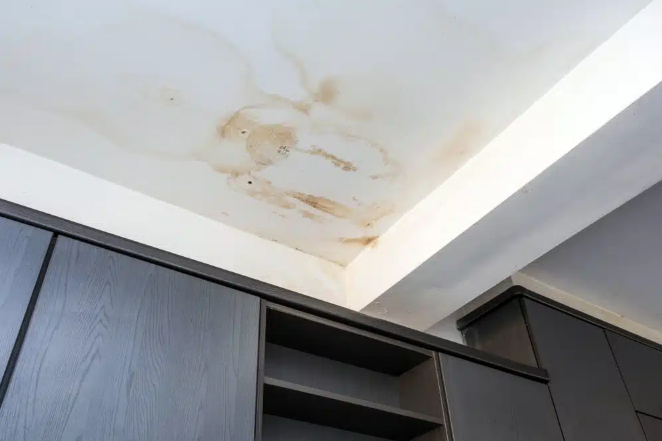Service Details
Water ingress is more than just a nuisance—it’s a serious threat to home’s or building’s structural integrity. Whether it’s a leaking roof, damp walls, or pooling water on floors, untreated water intrusion can lead to mold growth, concrete deterioration, and costly waterproofing repairs.
At S&S Remedial, we deliver targeted water ingress repairs that address the root cause of the issue and prevent future damage. Backed by proven solutions, industry expertise, years of experience, and tested waterproofing materials, we ensure lasting protection for your property.
Our Process?
- Inspection & Diagnosis: Thermal imaging, moisture mapping, and site assessment
- Structural Repairs: Crack injection, slab sealing, and joint restoration
- Waterproofing Solutions: Membrane replacement, sealant application, and drainage upgrades
- Prevention & Protection: – Long-term moisture control and maintenance advice


What We Repair?
- Cracked concrete slabs and stone walls
- Failed waterproofing membranes
- Leaking roofs, terrace, balconies and flashing
- Poor drainage and site grading
- Rising damp and condensation
- Basement leaks and concrete cancer
- Moisture ingress around windows
- Retaining walls and planter boxes
By addressing the underlying causes of the water seepage and implementing durable water ingress solutions, we help safeguard your property against structural damage and ensure a dry and healthy indoor environment.
Why Choose Our Water Ingress Solutions?
- 20 years of dedicated remedial and waterproofing work
- Local waterproofing experts from Brisbane & Gold Coast
- Tailored water ingress solutions – repairs designed specifically for your property and conditions
- State licensed professionals & insured
- Industry-leading materials & techniques
- Long-Term protection – we focus on prevention, not just patching
- Documented service warranty
Why Water Ingress A Serious Issue?
- Mould and mildew growth that harms air quality and triggers allergies.
- Concrete cancer and structural deterioration combined with natural calamities are a recipe for disaster.
- Timber rot in framing and flooring, increasing the risk of unforeseen injuries.
- Electrical hazards from moisture penetration, which can cause fires.
- Expensive restoration costs and potential property devaluation.

What Causes Water Ingress?
As a provider of water ingress services, we observed that water seepage can be caused by various factors, ranging from structural issues to environmental conditions such as:
Roofing Problems
Damaged or aging roofing materials, such as missing or cracked tiles, deteriorated shingles, or compromised flashing, can allow water to seep into the underlying structure.
Cracks and Gaps
Cracks in walls, foundations, and joints allow water to infiltrate the building. These cracks can result from settling, thermal expansion and contraction, or structural movement.
Poorly Sealed Openings
Improperly sealed windows, doors, vents, and utility penetrations allow water to enter the building during rainstorms or high winds.
Inadequate Drainage
Insufficient or blocked drainage systems, including gutters, downspouts, and French drains, can cause water to accumulate around the building’s perimeter and penetrate the foundation or basement.
Plumbing Leaks
Leaking pipes, fixtures, and appliances inside the building can lead to water ingress, mainly if the leaks go unnoticed or unrepaired for an extended period.
Condensation
Excessive moisture buildup inside the building due to poor ventilation, high humidity levels, or temperature differentials can result in condensation forming on walls, ceilings, and windows, leading to water damage.
Surface Water Runoff
Improper grading or landscaping around the building can direct surface water toward the foundation, increasing the risk of moisture ingress.
Extreme Weather Events
Severe weather conditions, such as heavy rainfall, hurricanes, or snowmelt, can overwhelm building systems and exacerbate existing vulnerabilities, leading to water seepage.
Building Envelope Failures
Deficiencies in the building envelope, including gaps in exterior cladding, inadequate waterproofing membranes, or compromised sealants, can allow water to penetrate the structure. Identifying the root cause of water ingress is crucial for implementing effective water ingress repairs and preventing further damage to your property.

What Is The Meaning of Water Ingress?
Water ingress or moisture ingress means the unintended entry of water into a building or structure, typically through cracks, gaps, or faulty construction elements. It’s a form of moisture intrusion that can lead to serious problems if not addressed promptly.
- It occurs when external water penetrates walls, roofs, floors, or foundations.
- Common sources include damaged roofing, cracked render, faulty flashing, blocked gutters, and rising damp.
- It’s often associated with penetrating damp, where water moves through building materials into interior spaces.
Brand We Trust

Testimonials

These guys do such an excellent job and provided a great waterproofing service. I’ve used them for roof membrane waterproofing on a couple of houses now and wouldn’t go with anyone else. Thanks, S&S Remedial Services!
– Luke Harris

Stoked with the prompt rooftop waterproofing service and quality workmanship! Shawn and his expert team delivered the best waterproofing for our rooftop—highly recommend them to anyone looking for reliable, top-tier results.
– Dan Hamilton

I cannot fault these guys. They handled the water ingress repairs on our property in Brisbane. Fantastic communication, streamlined process, and top-quality crew and workmanship. Highly recommend!
– John Becham

I was dealing with persistent water leaks on my roof and needed urgent help. I searched for a local waterproofing company and found S&S Remedial. From the first call to the final application, they were professional, fast, and incredibly thorough. My roof is now completely sealed and leak-free, and I couldn’t be happier with the results. Highly recommend them to anyone facing water seepage issues.
– Lance Carlton

S&S Remedial provided excellent water ingress repairs for our house. The team was professional, efficient, and the results were flawless. No more leaks—just peace of mind, rain or shine!
– Daniel Reid

The water ingress treatment was handled professionally from beginning to end. The results have held up flawlessly through intense rain, the team worked efficiently, and the membrane system was of excellent quality.
– Chole Fraser
Need Help Fast? Get Free Site Inspection Now!
0468 760 750 |
0407 560 277

What Is the Solution for Water Ingress?
At S&S Remedial, we offer comprehensive water ingress services tailored to your needs. Our experienced team utilises advanced techniques and high-quality materials to address water intrusion issues effectively. Our water ingress treatments include:
- Roof repairs and waterproofing
- Wall and foundation sealing
- Window and door caulking and sealing
- Plumbing leak detection and repair
By addressing the underlying causes of water infiltration and implementing durable solutions, we help safeguard your property against water damage and ensure a dry and healthy indoor environment.
Trust Our Water Ingress Services!
Don’t let water ingress compromise the integrity of your property.
Contact S&S Remedial today to schedule a consultation with our experts and learn more about our water ingress services
Frequently Asked Question
Do you offer warranties on your water ingress repair work?
Yes. S&S Remedial provides warranties on completed water ingress repairs to ensure long-term durability and peace of mind
Is it safe to occupy the building during repairs?
In most cases, yes. S&S Remedial conducts water ingress treatment with minimal disruption, but safety assessments are made on a case-by-case basis.
Do you offer residential and commercial water ingress repair services?
How long does SS Remedial water ingress repair process take?
Is water ingress damage covered by insurance?
Water ingress damage is typically not covered by standard homeowners or strata insurance policies because it is viewed as a gradual defect in the building or a wear-and-tear problem instead of sudden accidental damage.
How much water ingress repair costs in Brisbane or Gold Coast
Professional waterproofing solutions in Brisbane and the Gold Coast usually costs between AUD$2000 and AUD$3000+ per square metre (or roughly AUD$100 per litre of repair material). However, depending on access and severity, minor cracks or spalling spots can cost anywhere from a few thousand dollars to AUD$5,000+.

